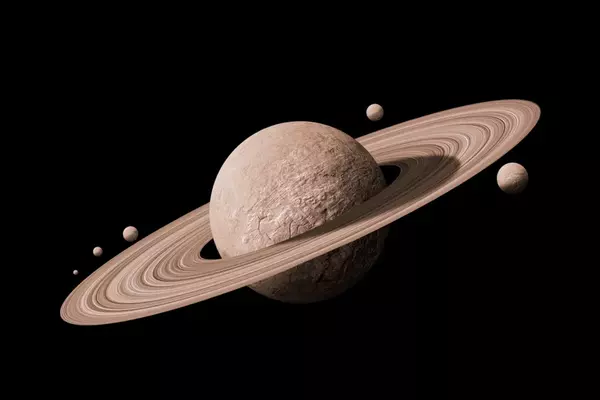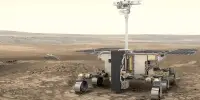The tilt of Saturn’s rotation axis may be caused by its moons, according to scientists from CNRS, Sorbonne University, and the University of Pisa. The current tilt of Saturn’s rotation axis is caused by the migration of its satellites, particularly Titan, its largest moon.
Recent observations show that Titan and the other moons are gradually moving away from Saturn at a much faster rate than astronomers had previously estimated. By incorporating this increased migration rate into their calculations, the researchers concluded that this process affects the inclination of Saturn’s rotation axis: as its satellites move further away, the planet tilts more and more.
Scientists have recently demonstrated that the influence of Saturn’s satellites can explain the gas giant’s rotation axis tilt. Their research also predicts that the tilt will increase even more over the next billion years.
Two CNRS and Sorbonne University scientists working at the Institute of Celestial Mechanics and Ephemeris Calculation (Paris Observatory — PSL/CNRS) have just demonstrated that the influence of Saturn’s satellites can explain the tilt of the gas giant’s rotation axis. Their findings, which were published in the journal Nature Astronomy on January 18, 2021, also predict that the tilt will increase even more over the next few billion years.
The decisive event that tilted Saturn is thought to have occurred relatively recently. For over three billion years after its formation, Saturn’s rotation axis remained only slightly tilted. It was only roughly a billion years ago that the gradual motion of its satellites triggered a resonance phenomenon that continues today: Saturn’s axis interacted with the path of the planet Neptune and gradually tilted until it reached the inclination of 27° observed today.
Saturn’s tilt appears to be caused by its moons, much like David versus Goliath. This is the conclusion of recent research conducted by scientists from the CNRS, Sorbonne University, and the University of Pisa, which demonstrates that the current tilt of Saturn’s rotation axis is caused by the migration of its satellites, particularly Titan.
Recent observations show that Titan and the other moons are gradually moving away from Saturn at a much faster rate than previously thought. The researchers concluded that by incorporating this increased migration rate into their calculations, this process affects the inclination of Saturn’s rotation axis: as its satellites move further away, the planet tilts more and more.
The decisive event that tilted Saturn is thought to have occurred relatively recently. For over three billion years after its formation, Saturn’s rotation axis remained only slightly tilted. It was only roughly a billion years ago that the gradual motion of its satellites triggered a resonance phenomenon that continues today: Saturn’s axis interacted with the path of the planet Neptune and gradually tilted until it reached the inclination of 27° observed today.

These findings call into question previous scenarios. Astronomers were already in agreement about the existence of this resonance. However, they believed that it had occurred very early on, over four billion years ago, due to a change in Neptune’s orbit. Since that time, Saturn’s axis was thought to have been stable. In fact, Saturn’s axis is still tilting, and what we see today is merely a transitional stage in this shift. Over the next few billion years, the inclination of Saturn’s axis could more than double.
Because the Earth’s axis is tilted about 23 degrees, the Sun’s latitude varies from 23 degrees north of the equator at the start of northern summer to 23 degrees south of the equator at the start of northern winter. On Earth, the tilt is the primary cause of the weather differences we see between summer and winter. Planets with smaller tilts may have less extreme weather variations, whereas planets with larger tilts may have more extreme variations.
Because our orbit is nearly circular, there is little variation in the overall climate of the Earth, averaged over both the northern and southern hemispheres. However, because other planets have more elliptical orbits, their seasonal variations in weather are very different from what we experience. We are much farther away from the Sun than Mercury or Venus, but we are much closer than the other six planets. Generally, weather variations are more pronounced for those planets closer to the Sun.
The research team had already reached similar conclusions about Jupiter, which is expected to undergo comparable tilting due to the migration of its four main moons and resonance with Uranus’ orbit: the inclination of Jupiter’s axis could increase from 3° to more than 30° over the next five billion years.
















